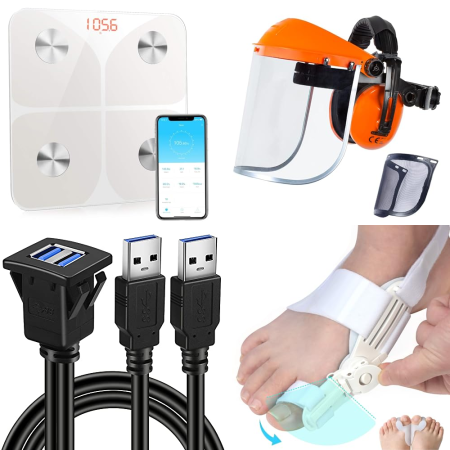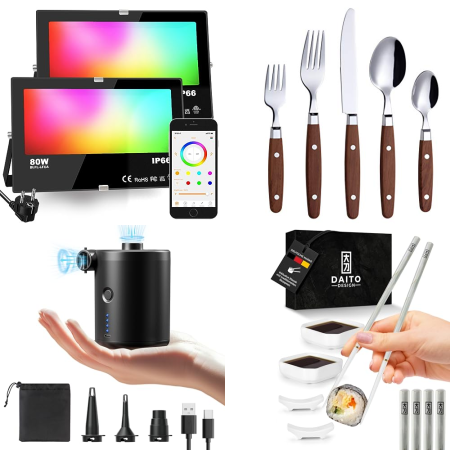Have you noticed how the idea of “new” is starting to lose its charm? The most valuable things today aren’t always the ones fresh out of the box—they’re the ones that have already proven their worth. Here’s something to think about as you read:
|
“What buys more than you spend, yet costs less than you expect?” |
You might not recognize the answer right away, but by the end of this article, you will.
In the next lines, you’ll explore how a new wave of resale and refurbishment known as recommerce is reshaping buying habits across Germany and Europe. We’ll break down the data behind this shift, show how consumers are driving it, explain the regulations that protect them, and highlight the smartest ways to take part.
By the end, you’ll understand:
-
Why recommerce is growing faster than traditional retail.
-
How everyday shoppers are changing the meaning of “value.”
-
What new rules, platforms, and technologies are making resale safer and smarter.
And somewhere between the lines, you’ll discover the real answer to that riddle.
1. How Consumers Are Driving Recommerce in Germany and Europe
1.1 Demographics & Behaviour
Younger consumers lead the charge. In Europe, 81 % of 18–24 year-olds have bought or sold used goods. In Germany for example, roughly 55 % of adults bought a used item online in the past year.
-
Cost savings: Many buyers are drawn by lower prices compared to new-goods. In Germany a survey found 71 % cited cost as a driver and 66 % cited a better price-quality ratio.
-
Value for money: Pre-owned items are seen not just as “second choice” but as smart choice.
-
Sustainability awareness: Environmentally conscious consumers see reuse as a way to reduce waste and resource use. In Europe almost half the respondents said ecological reasons matter.
While youth dominate usage, older age groups are catching up as online trust grows and resale becomes more mainstream.
1.2 Popular Product Categories
In Germany the most popular categories for recommerce are:
-
Fashion / clothing & shoes
-
Books & media
-
Electronics (smartphones, laptops)
Leading platforms in Germany include Vinted, eBay Kleinanzeigen, Momox, Rebuy and Back Market.
We’re also seeing new trends: hyper-local exchanges (neighbours selling to neighbours), and big retailers launching resale programs such as Zalando Pre-Owned.
1.3 Consumer Behaviour Insights from Online Communities
Online communities such as Reddit shed light on how everyday consumers view recommerce. Posts in German-language threads often mention Vinted as “the most popular” app for clothes and eBay Kleinanzeigen for local bargains. The tone suggests that pre-owned is now seen not as second-class but as smart shopping.
Trust, deal-seeking behaviour and community recommendations play big roles. Many users look for grading, warranties or seller ratings to mitigate risk.
These community voices mirror broader data: resale is becoming mainstream among younger consumers, and older groups are steadily joining in.
2. Regulatory Landscape: Rules Shaping Recommerce
2.1 EU Consumer Protections
Under EU consumer law, used-goods sellers must ensure items are “as described, of satisfactory quality and fit for purpose”.
Key protections:
-
A 14-day “cooling-off” return right for distance sales.
-
Minimum legal warranty (often one year) on faulty goods from businesses.
Despite these rules, enforcement gaps remain: a March 2025 sweep found that about 45 % of online second-hand traders did not properly inform buyers of the 14-day rule; many ignored warranty obligations too.
2.2 Product Safety Rules
The EU’s General Product Safety Regulation (GPSR) now explicitly covers used, refurbished and repaired products.
This means platforms and refurbishers must ensure items (especially electronics, toys, appliances) meet health/safety standards. Some resale platforms now limit listings to certified items to manage this risk.
2.3 Taxation & Incentives
For tax and policy:
-
The EU allows a VAT margin scheme for second-hand goods: the trader pays VAT only on the margin (profit) rather than full value.
-
Germany links recommerce to circular-economy goals: incentives for reuse, repairs, and clarity around warranties on pre-owned items.
As regulatory frameworks strengthen, the environment for consumers participating in resale becomes safer and more transparent.
3. Consumer-Focused Business Models
From a consumer’s perspective, here are the main ways to get involved in recommerce.
3.1 Online Resale Platforms
Typical marketplaces such as Vinted, eBay Kleinanzeigen, Zalando Pre-Owned allow individuals to buy and sell used goods. The models vary: C2C (consumer-to-consumer) or C2B2C (brand/retailer buys back then resells).
These platforms often provide grading (item condition), authenticity checks, and buyer protections (returns, ratings). For the consumer, it means more trust and lower risk when buying second-hand.
3.2 Certified Refurbishment Programs
Electronics or appliances undergo inspection, repair and certification. Examples in Europe include Back Market, Swappie (for iPhones) and Momox (media & electronics) in Germany.
Consumers benefit by receiving warranties and higher-quality used items. This builds trust in the “refurbished” label and reduces anxiety around buying used tech.
3.3 Trade-In & Buyback Incentives
Many brands offer trade-in or buy-back programs: you give back your old item, get a voucher or loyalty benefit, and the brand resells your used item through a recommerce channel. This model strengthens brand loyalty, reduces waste, and puts value back into the system. From a consumer side: you get value for an item you would discard anyway.
3.4 Subscription and Rental Services
In addition to outright resale, some services provide rentals or subscriptions: e.g., wardrobe rental, tool libraries, furniture-as-a-service. While not strictly resale, these models align with the circular economy logic of recommerce: they extend product lifecycles and reduce single-use consumption.
For a consumer, they offer affordability, convenience and the chance to try rather than commit.
4. Market Trends & Insights for Consumers
4.1 Growth & Mainstreaming
In Germany the recommerce market reached roughly €9.9 billion in 2024, growing ~7.2 % year-on-year.
Across Europe the second-hand market is projected to reach €86 billion by 2028.
The broader recommerce sector (used + refurbished goods) in Europe is forecast to grow at ~10.8 % CAGR between 2024-2030.

Source : MarkNtel
What this means for you: what started as niche is now firmly entering the mainstream. Whether you’re 20, 35 or 50, resale is becoming a viable, trusted option.
4.2 Motivational Shifts
Consumers are increasingly motivated by:
-
Financial drivers: cost savings and better value remain top reasons.
-
Sustainability drivers: a growing share mention ecological reasons—though often after cost and value.
-
Trust & transparency: As resale becomes mainstream, buyers expect clear grading, warranties, safer platforms. In Germany reports show that roughly three-quarters of recommerce buyers intend to keep buying pre-owned, and more than half plan to buy used more often.
For you as a consumer: the smart choice is to treat recommerce not as “buying used” but as “buying wisely”.
5. Barriers & Consumer Considerations
Even as recommerce grows, consumers should be aware of some challenges.
5.1 Trust & Perception
Some buyers still worry about the condition, authenticity or lifespan of used items. Grading and warranties help, but you’ll still want to check ratings, return policies and seller reviews.
A consumer without knowledge may buy something that doesn’t match description, has hidden faults, or lacks after-sale protection.
5.2 Product Availability & Logistics
-
Stock can be limited (used items are one-of-a-kind).
-
Condition varies widely (“like new”, “good”, “fair” grading).
-
Local vs national shipping logistics matter (sometimes “hyper-local” sales are easier).
As a buyer you should check condition photos, ask for details, factor in shipping/returns.
5.3 Legal Awareness
Consumers often aren’t fully aware of rights when buying used. For example: the 14-day cooling-off right, or warranty obligations may differ when buying from individuals vs businesses.
As a buyer you should ask: “Am I buying from a business or private seller? What warranty applies? What return right do I have?”
6. Tips for Consumers to Participate Smartly
Here are practical tips to make recommerce work for you:
-
Buy certified refurbished electronics when possible (look for warranty, grade, inspection).
-
Use trade-in programs when you upgrade gear (get value, reduce waste).
-
On resale marketplaces, check seller authenticity, reviews, ratings, condition photos.
-
Follow community threads (e.g., Reddit, forum threads) for deals, tips and trusted sellers.
-
Compare new vs used pricing + condition: sometimes new goods may cost only slightly more so weigh value.
-
Factor in returns & warranty: an item at half price may not be a bargain if it has no warranty.
-
Consider rental/subscription models for items you only need short-term.
Following these steps helps you turn recommerce into both smart consumption and responsible consumption.
7. Outlook: What’s Next for European Recommerce
-
Increasing regulation: Clearer warranty rules, safety standards and digital product passports will boost consumer confidence and platform trust.
-
Digital tools & innovation: AI pricing, automated condition grading, inventory sync, better logistics will reduce friction.
-
More B2B-to-C involvement: Brands will push resale and buy-back schemes more aggressively (as loyalty & sustainability tools).
- Wider consumer adoption: Not just Gen Z: older age groups are increasingly comfortable buying used goods online.
|
The riddle we began with asked: “What buys more than you spend yet costs less than you expect?” The answer is recommerce: a smarter way to buy, sell and reuse. |
Conclusion
Recommerce is fast becoming the default mode of smart shopping in Germany and across Europe. For consumers, it unlocks affordability, access, variety and trust. For the planet, it extends product life-cycles, reduces resource use and supports circular economy goals.
The shift toward recommerce is already happening, the real question is, will you be part of it?
Join LiquidationStock.com to access verified surplus inventories, and refurbished stock before the market moves further.









